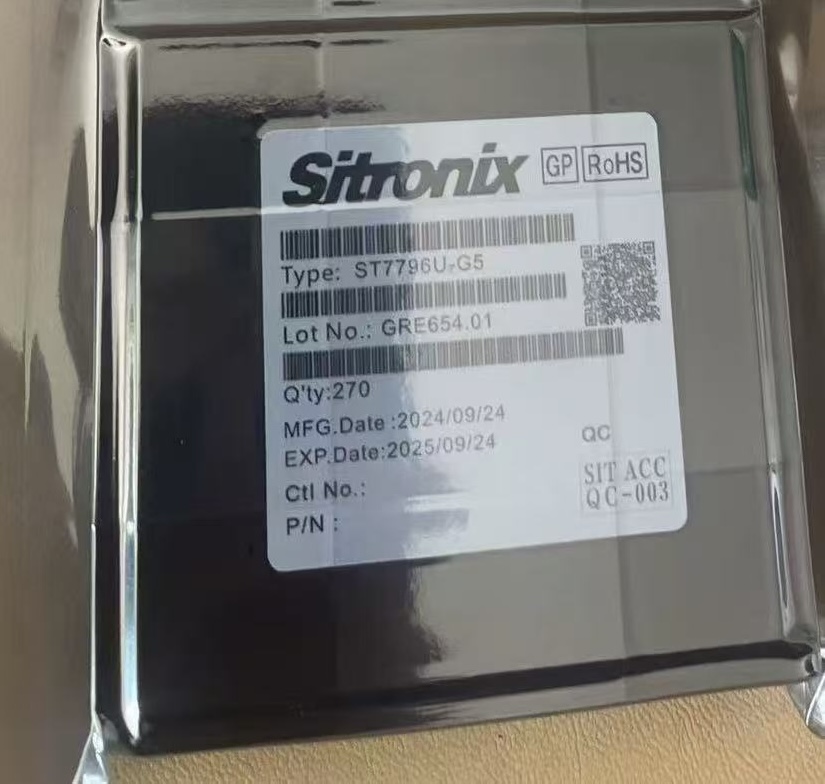Display driver IC, advantages and disadvantages of ST7796 and ILI9488
2025-04-20
In the field of small-size TFT screen driver ICs, ST7796 and ILI9488 ICs are often used by customers. Many customers also have questions when choosing ICs. Which IC is more cost-effective and has better performance? Today I will briefly express my views here. If users are making devices that require high refresh rates, such as gaming devices or video playback, ST7796U may be more suitable. ILI9488 may have more advantages in cost or be more flexible in some interfaces. The following is a comparison:
ONE. ST7796U

Advantages
1. High-resolution support
· Supports up to 320x480 resolution (or even higher), suitable for scenes that require fine display (such as industrial instruments, medical equipment, and high-end consumer electronics).
· Supports RGB 24/16-bit interface, higher color depth (usually supports 16.7M colors), more vivid display effect, and also supports SPI interface and MCU and MIPI interface.
2. High refresh rate
· Supports 60Hz or higher refresh rate, suitable for dynamic image display (such as video playback, games), and reduces ghosting.
3. Hardware acceleration function
· Built-in hardware graphics acceleration engine (such as rotation, scaling, transparency mixing), reduces the load of the main control chip and improves system efficiency.
4. Low power mode
· Supports low power features such as sleep mode and partial refresh, suitable for battery-powered devices (such as portable instruments, wearable devices).
5. Interface flexibility
· Supports RGB parallel interface or MIPI DSI interface, adapting to different hardware platforms.
Disadvantages
1. High cost
· Compared with the same level of driver IC (such as ILI9488), the price is higher and may not be suitable for cost-sensitive projects.
2. High development complexity
· High performance requirements for the main control chip (need to handle high data transmission rates).
TWO. ILI9488
Advantages
1. High cost performance
· Low price, suitable for mid-range projects with limited budget (such as smart home screens, POS machines, industrial control equipment).
2. Wide compatibility
· Supports 8/9/16-bit parallel interface and SPI interface, strong adaptability, easy to integrate with mainstream MCU (such as STM32, ESP32), and also supports MIPI interface.
· Compatible with a variety of displays (such as 320x480 resolution TFT LCD), rich ecological resources (more code libraries and sample programs).
3. Basic performance is stable
· Supports 320x480 resolution and 60Hz refresh rate, meeting most conventional display requirements (such as text, simple graphics).
· Built-in hardware acceleration functions (such as scrolling, cursor control), but less complex than ST7796U.
4. Low power design
· Supports sleep mode and partial refresh, and power consumption performance is better than some high-end driver ICs.
Disadvantages
1. Low refresh rate and resolution limit
· Only supports 60Hz refresh rate at most, and the dynamic display effect is not as smooth as ST7796U.
· Limited support for high frame rate video or game scenes.
2. Average color and contrast
· The color depth is usually 16-bit (65K colors), the contrast adjustment range is narrow, and the display effect is slightly inferior to ST7796U.
3. Weak functional scalability
· Lack of advanced graphics acceleration functions (such as transparency blending, multi-layer overlay), complex interface development relies on software simulation.
Third, finally, if the project requires dynamic video or games, ST7796U (high refresh rate + hardware acceleration) is preferred; if only basic display functions are required and the budget is limited, ILI9488 is more suitable. The summary section should help users choose according to project requirements. For example, if you pursue high performance and high resolution, choose ST7796U; if the budget is limited and the demand is not high, choose ILI9488.
 English
English Español
Español Português
Português русский
русский Français
Français 日本語
日本語 Deutsch
Deutsch tiếng Việt
tiếng Việt Italiano
Italiano Nederlands
Nederlands ภาษาไทย
ภาษาไทย Polski
Polski 한국어
한국어 Svenska
Svenska magyar
magyar Malay
Malay বাংলা ভাষার
বাংলা ভাষার Dansk
Dansk Suomi
Suomi हिन्दी
हिन्दी


